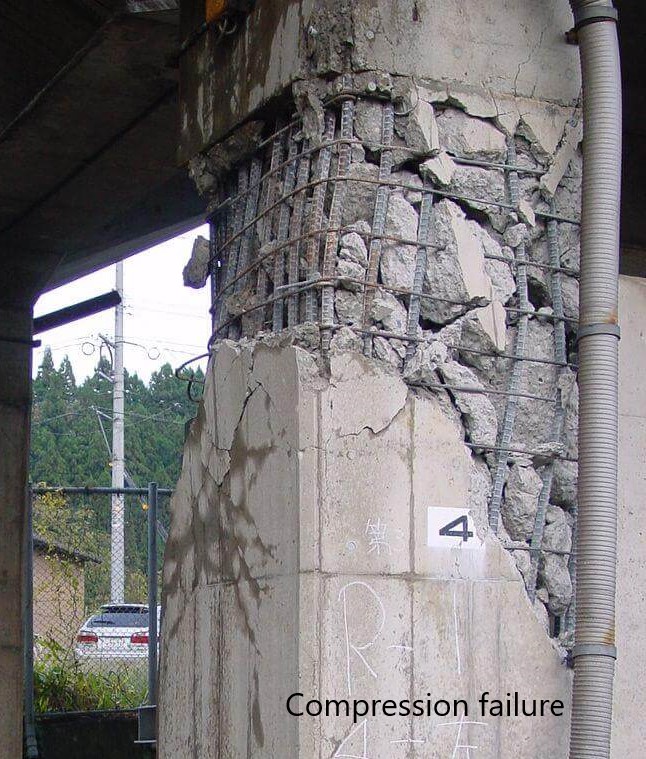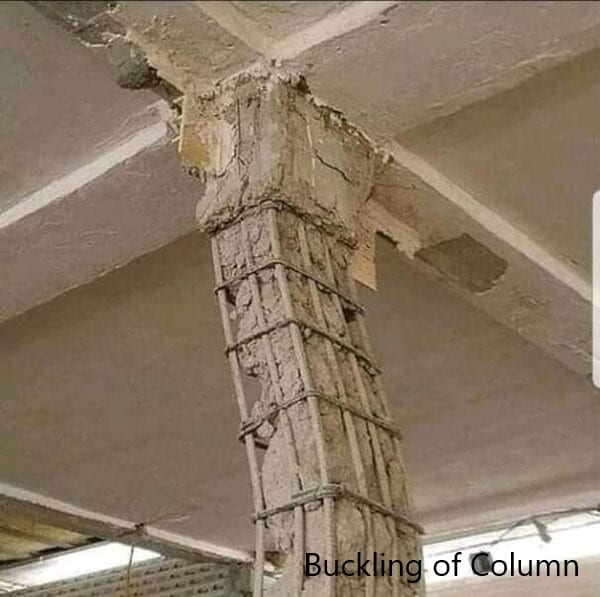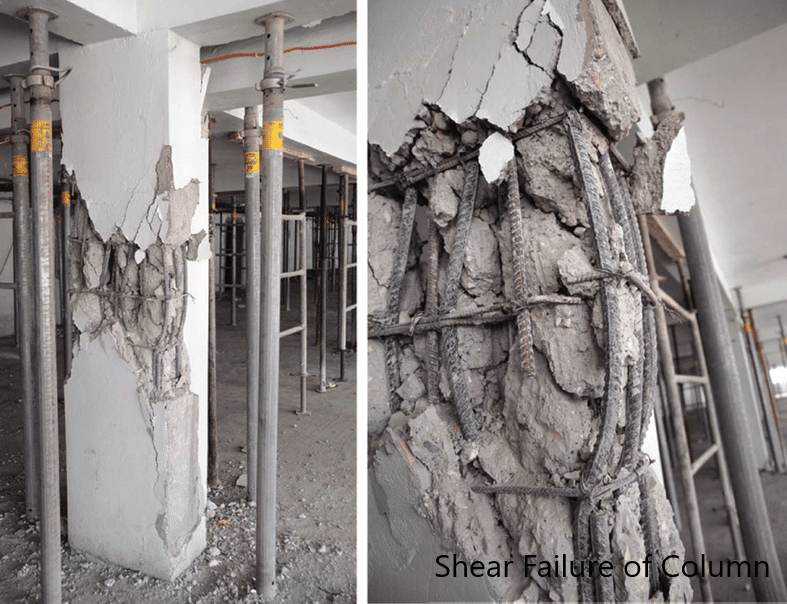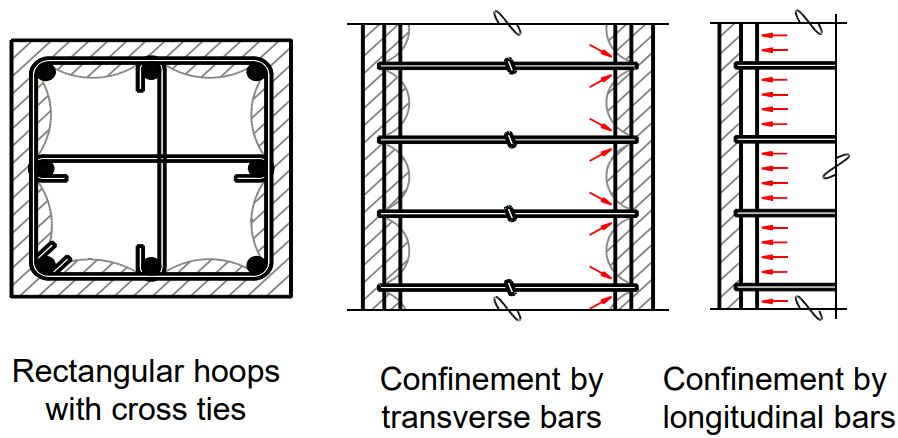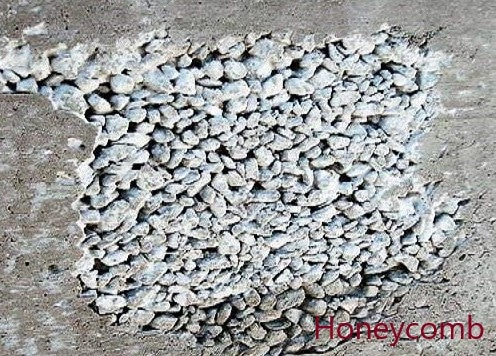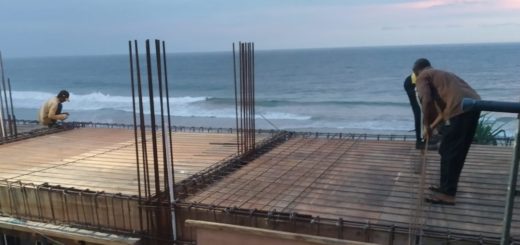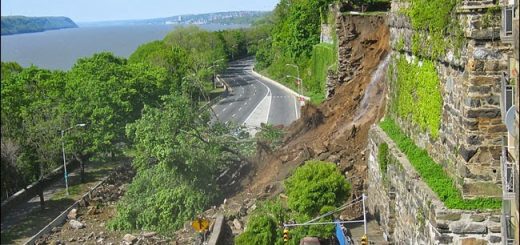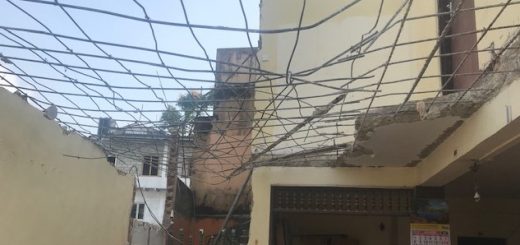8 Types of Column Failure Methods
Types of column failure depend on the type of structural system and columns can fail in different modes as discussed in this article.
The column is the main element that carries the vertical loads to the foundation. Failure of a column could lead to the failure of the whole structure. Therefore, the failure of columns shall be avoided than any other element.
Further, the failure of the column could lead to the progressive collapse of the structure. Therefore, it is very important to identify the critical column and pay attention to them during design and construction.
The following types of column failure could be identified.
- Pure Compression Failure
- Combine stress failure
- Buckling Failure
- Shear Failure
- Failure due to Lack of Confinement Reinforcement
- Torsional Failures
- Failures due to Construction Defects
- Failures due to errors in the Construction
Pure Compression Failures
The column is an element that transfers the weight of a structure as axial stress to the foundation or supporting element.
Concrete is capable of carrying the compressive load is dominant in carrying loads whereas in other elements such as beams compressive stress is taken only by part of the section.
Reinforcement is also provided to columns where it is not possible concrete to carry the whole load or as nominal reinforcements.
The column can fail in compress due to the increase of the axial stress than its capacity. These types of failure could be due to the following reasons.
- Reinforcement and concrete have certain capacity based on there amount and area of the section. If axial stress is greater than that capacity column will fail in compression.
- Further, the reinforcement and concrete have their own stain that they can bear. As per the British standards, concrete is capable of carrying a strain up to 0.0035 and steel starts yielding at a strain of 0.002 and it can increase greater than the concrete. When the axial stress exceeds a certain amount resulting in concrete strain grater than 0.0035 concrete will fail suddenly. It will be a sudden crushing of concrete.
- If the section is sufficiently reinforced, it will provide warnings before these types of column failure. The article published as structural cracks in concrete could also be referred more information on cracking.
Combined Stress Failure
Concrete columns are subjected to bending moments in addition to the axial forces due to the eccentric moment generated due to the unbalance loads.
Bending stress and axial compression stress are added together to get the final stress in the section.
It will not be uniform stress. However, failure of the column will be based on the above criteria discussed under the pure compression failure.
The most important thing that the designer should consider in the design is the possible load combination and alternative loading effects. When there are significant deviations in the spans, we need to be alert about the design.
Buckling Failure
Mainly, the buckling failure can be identified as a failure of the design as we consider the buckling effect in the design. If the designer aware of these types of column failures, he could attend this.
The additional bending moment of the column slenderness of the column is considered in the design.
Further, the effective height of the column is considered based on its pattern of bucking.
Buckling failure, the name itself provide the idea about the mode of failure. Therefore, we consider it in the design. Buckling failure is the other basic mode of failure of columns in addition to crushing failure of columns.
We provide links to columns to avoid buckling. It is the basic idea for providing links to the columns other than for as shear reinforcements.
Shear Failure
Lateral loads in a structure are carrying by vertical elements such as columns and shear walls.
When there are no shear walls, columns carry these lateral loads. If no adequate shear links these types of column failure could occur.
Lateral loads are generated by winds, earthquake loads, from retaining structures, etc.
Shear links are provided to columns based on the shear forces excreted on them. Further, the size of the columns is increased in the direction of shear to increase the shear capacity.
In general, failure of columns due to shear can be identified as the failure of design. Designers should have provided adequate shear links or sections to carry the shear forces.
Failure due to Lack of Confinement Reinforcement
Vertical element subjected to cyclic loadings subjected to failure of this nature.
Failure causes mainly due to the lack of links in the area where there are higher shear forces.
In structural elements such as beams and columns, higher stresses are generated near the connections. Lack of links in these areas causes structural failures when cyclic loadings are applied.
The article published as Seismic Detailing of Beams and Columns provides a clear guide as to how we should detail the reinforcement to withstand for cyclic loadings.
Torsional Failures
There is a probability of columns subjecting to torsional moments.
Usually, columns are designed for axial, bending, and shear forces. However, due to the irregularities in the structure, the torsional behavior of the column can be observed.
Columns are torsionally rigid when they are compared with the beam as they have reinforcement around the section and links are provided at closer spacings.
However, if the torque exceeds the limiting values, columns could be failed in torsion.
The article published as 6 causes of beam failures discuss the torsional failure of beams and their cracking patterns.
Failure due to Construction Defects
Columns could fail due to the construction defects. For example, improperly treated honeycomb in a column could lead to a failure when the loads are applied. These types of column failure can be avoided if attended with much care.
Cavities inside the column that were not filled properly with construction ground reduce the compressive area of the column. As a result it axial capacity will be reduced.
Further, cavities inside the column could lead concrete to crack. It will open the reinforcement to the environment leading the corrosion of reinforcements.
Similar instances could cause failure.
Failure due to the Errors in the Construction
There may be many errors that could happen in construction and they also can categorize under types of column failure. Employing qualified engineer to the project and close supervision of construction work will minimize these types of column failure.
- Mistakenly reduce the bar diameter
- Construct an incorrect column in the location
- Changes in the grade of concrete
- Lack of strength in the concrete due to the failure of the concrete supplier.

